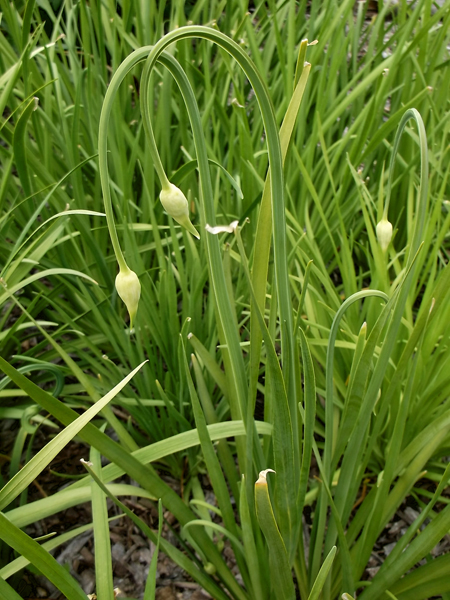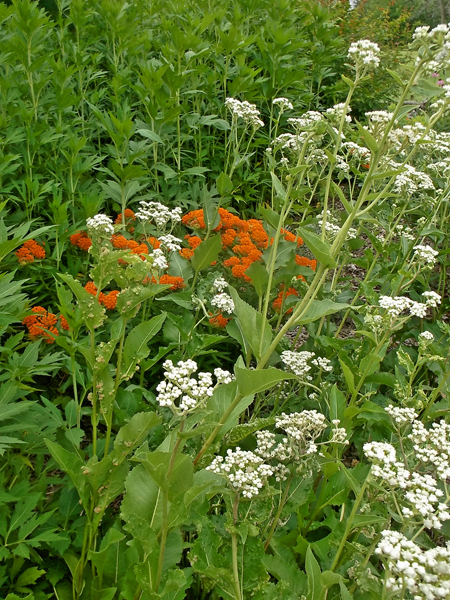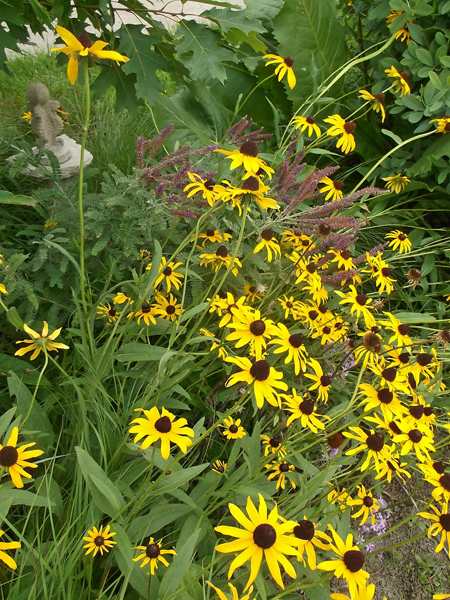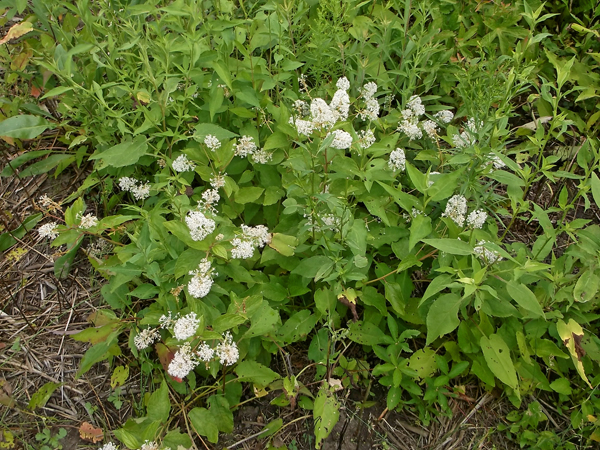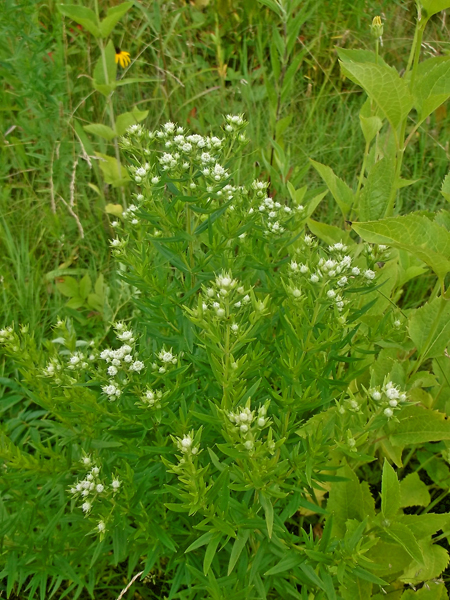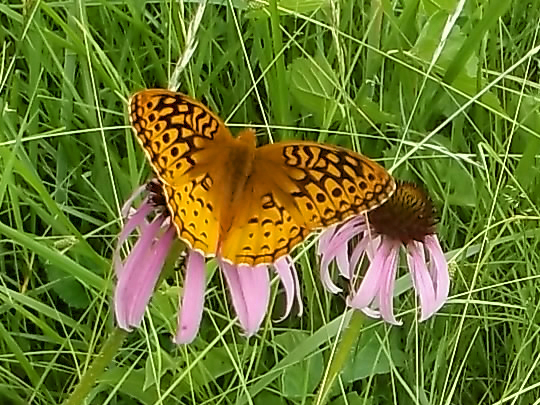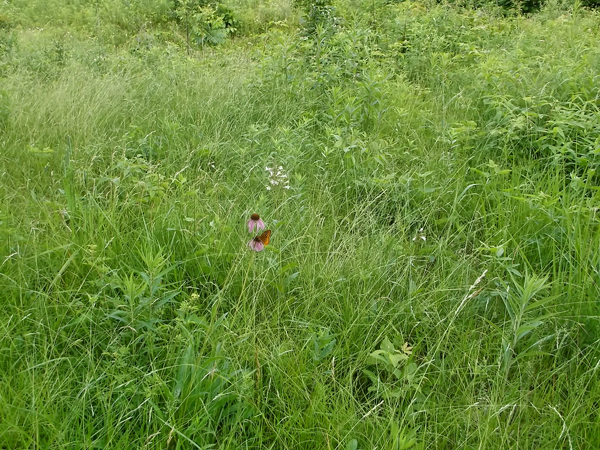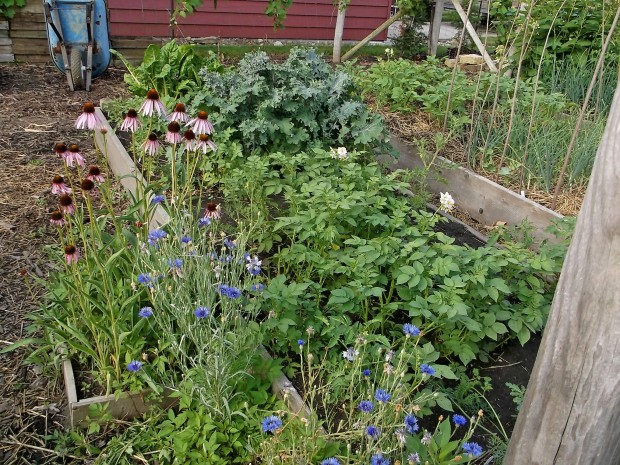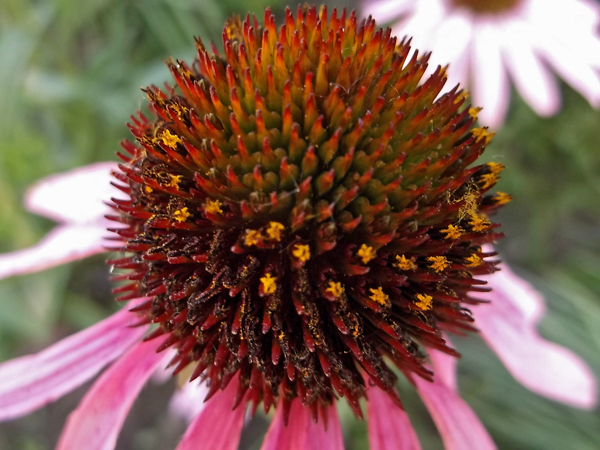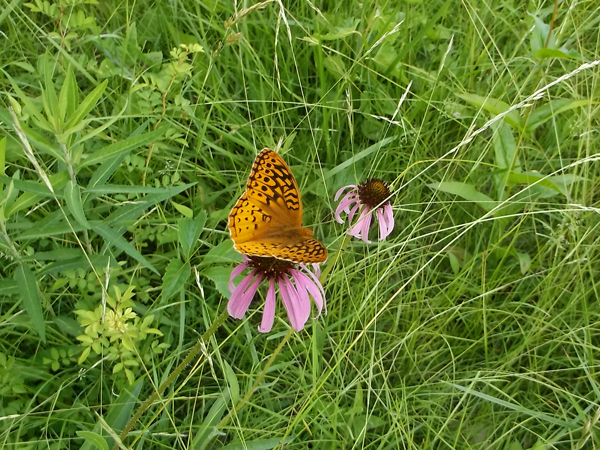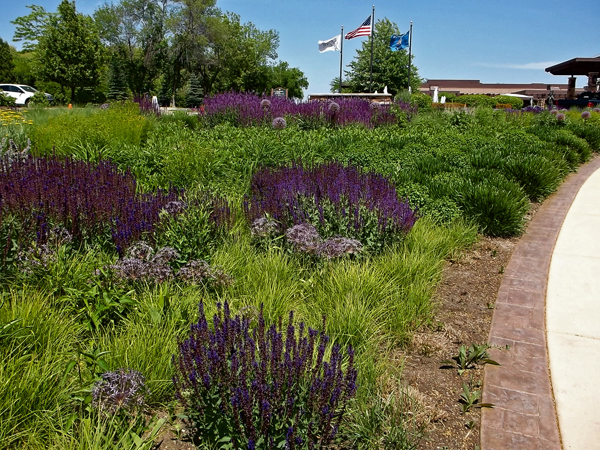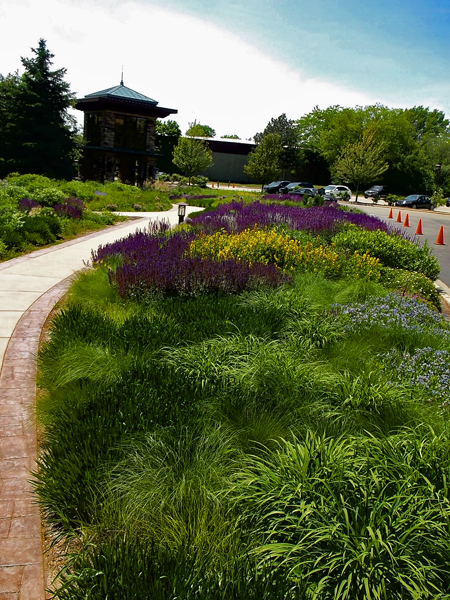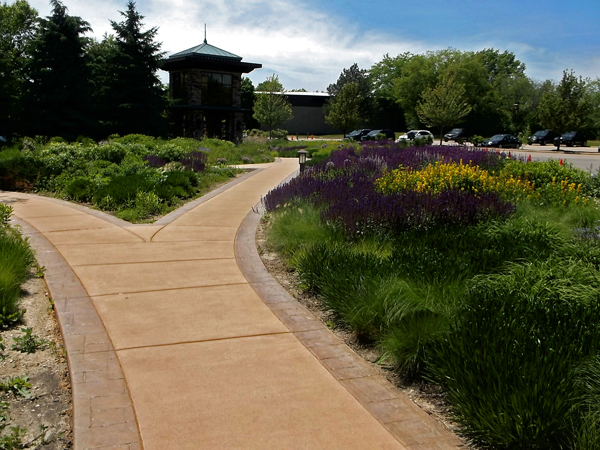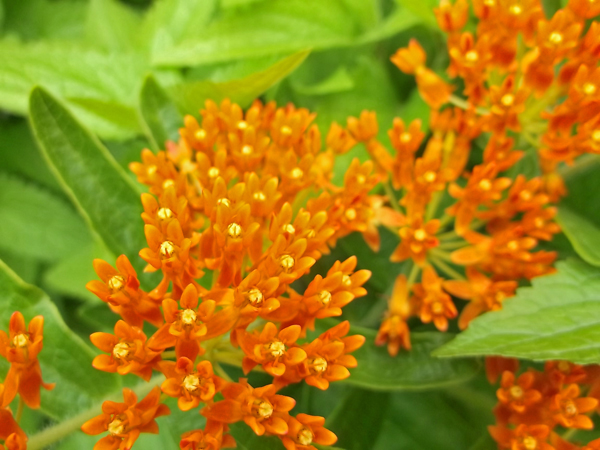 In early to Mid-July some of the more showy flowers come into bloom. In early spring, the shorter plants, including the violets, Yellow Star Grass, Sand Phlox, and the woodland wildflowers, such as Great White Trillium, and Sharp Lobed Hepatica are blooming. As the season progresses, it seems the plants that are in bloom are just a bit taller, on average, than the ones blooming just a few weeks before.
In a walk around my yard, I snapped some photos of the garden worthy native plants showing off a rainbow of colors, and one of the brightest is always Orange Milkweed (Asclepias tuberosa). The intense orange flowers, are a magnet to butterflies, including the endangered Monarch butterfly, which rely on milkweeds to lay their eggs; Monarch caterpillars (larvae) will only eat the leaves of milkweed plants, without milkweed, there can be no Monarch butterflies.
In early to Mid-July some of the more showy flowers come into bloom. In early spring, the shorter plants, including the violets, Yellow Star Grass, Sand Phlox, and the woodland wildflowers, such as Great White Trillium, and Sharp Lobed Hepatica are blooming. As the season progresses, it seems the plants that are in bloom are just a bit taller, on average, than the ones blooming just a few weeks before.
In a walk around my yard, I snapped some photos of the garden worthy native plants showing off a rainbow of colors, and one of the brightest is always Orange Milkweed (Asclepias tuberosa). The intense orange flowers, are a magnet to butterflies, including the endangered Monarch butterfly, which rely on milkweeds to lay their eggs; Monarch caterpillars (larvae) will only eat the leaves of milkweed plants, without milkweed, there can be no Monarch butterflies.
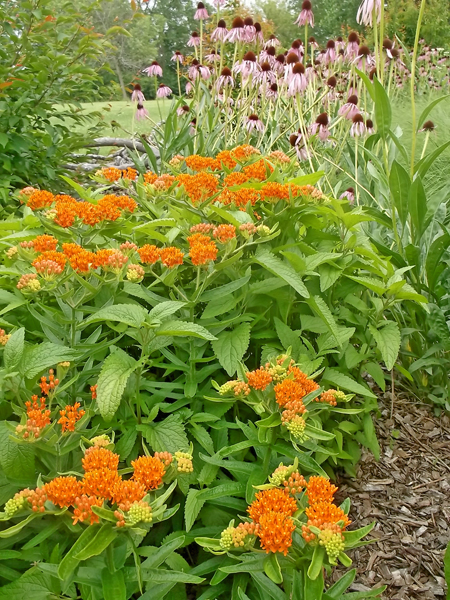 Orange Milkweed reaches a height and spread of approximately 18 inches, and blooms from the end of June until Mid-July. The bright orange flowers can also appear in shades of yellow or reddish orange - uncommon. In the photo above, the milkweed in planted in combination with Blue Mist Flower, which will be covered in blue fuzzy blooms come September (you read more about that plant <here>). Behind the milkweed is Pale Purple Coneflower (Echinacea pallida), which provides nectar to butterflies and seed for Goldfinches and other seed eating birds.
In the meadow, the Orange Milkweed is also quit showy, but will go dormant, as the asters and goldenrods begin to grow taller, as their later bloom time approaches.
Orange Milkweed reaches a height and spread of approximately 18 inches, and blooms from the end of June until Mid-July. The bright orange flowers can also appear in shades of yellow or reddish orange - uncommon. In the photo above, the milkweed in planted in combination with Blue Mist Flower, which will be covered in blue fuzzy blooms come September (you read more about that plant <here>). Behind the milkweed is Pale Purple Coneflower (Echinacea pallida), which provides nectar to butterflies and seed for Goldfinches and other seed eating birds.
In the meadow, the Orange Milkweed is also quit showy, but will go dormant, as the asters and goldenrods begin to grow taller, as their later bloom time approaches.
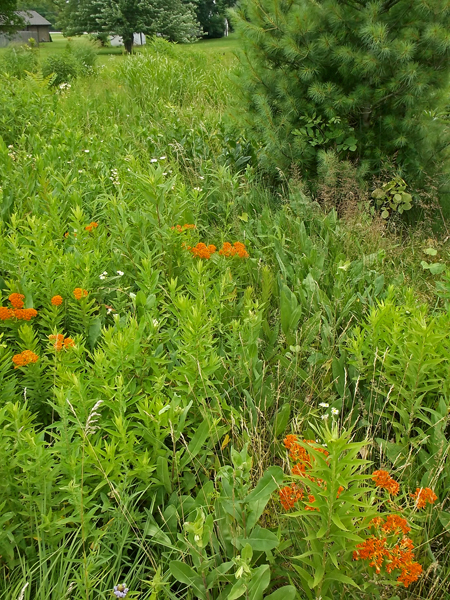 Also in the meadow, is a purple tinged Big Bluestem grass (Andropogon gerardii). This one has a bit more color than is typical, 'Red October' is a cultivar grown in the nursery trade specifically for this purple accent and its red fall color - I planted a specimen of 'Red October' in another part of the garden and will compare the two specimens for ornamental qualities. The specimen below is approximately three feet across in width.
Another milkweed, just about to bloom, is the Red, or Swamp Milkweed (Asclepias incarnata):
It's another butterfly favorite, and as its common name indicates, can take wet soils, but will grow fine in typical well-drained garden soils, attaining heights of three to four feet on average. Neither the Red or Orange Milkweeds spread aggressively, but may come up from seed if bare soil is near the parent plant.
Also in the meadow, is a purple tinged Big Bluestem grass (Andropogon gerardii). This one has a bit more color than is typical, 'Red October' is a cultivar grown in the nursery trade specifically for this purple accent and its red fall color - I planted a specimen of 'Red October' in another part of the garden and will compare the two specimens for ornamental qualities. The specimen below is approximately three feet across in width.
Another milkweed, just about to bloom, is the Red, or Swamp Milkweed (Asclepias incarnata):
It's another butterfly favorite, and as its common name indicates, can take wet soils, but will grow fine in typical well-drained garden soils, attaining heights of three to four feet on average. Neither the Red or Orange Milkweeds spread aggressively, but may come up from seed if bare soil is near the parent plant.
 The Common Milkweed (Asclepias syriaca), however, while a great attractor of butterflies, will spread by randomly by wandering underground roots, so while the flowers are sweet smelling, it would be best to plant a less aggressive milkweed in a small garden - the milkweed shown below is in the meadow, and is quite happy - as are the Monarch Butterflies that laid their eggs on this plant this spring!
The Common Milkweed (Asclepias syriaca), however, while a great attractor of butterflies, will spread by randomly by wandering underground roots, so while the flowers are sweet smelling, it would be best to plant a less aggressive milkweed in a small garden - the milkweed shown below is in the meadow, and is quite happy - as are the Monarch Butterflies that laid their eggs on this plant this spring!
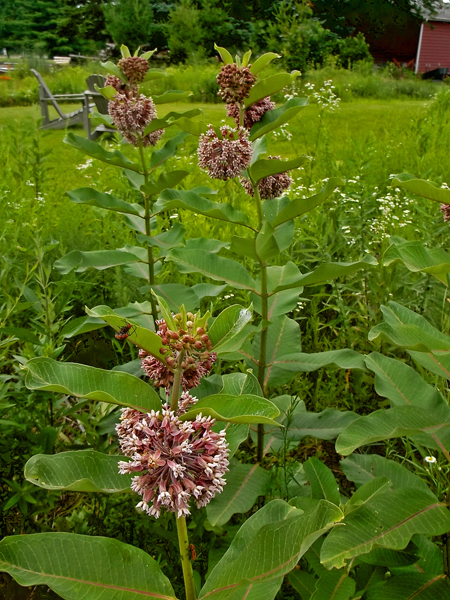 One of the prairie shrubs blooming around the 4th of July is the purple flowered Lead Plant (Amorpha canescens), with accents of bright orange anthers. This 18 inch, to three foot tall, sprawling shrub is attractive even when not in flower - the grey finely divided leaves are a nice contrast to nearby flowers.
One of the prairie shrubs blooming around the 4th of July is the purple flowered Lead Plant (Amorpha canescens), with accents of bright orange anthers. This 18 inch, to three foot tall, sprawling shrub is attractive even when not in flower - the grey finely divided leaves are a nice contrast to nearby flowers.
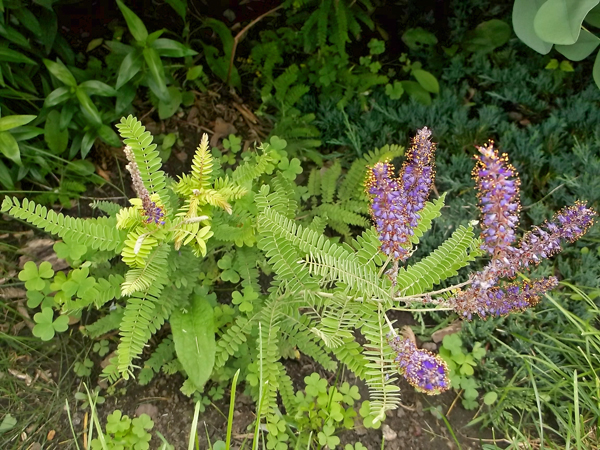 Buttonbush (Cephalanthus occidentalis), is another shrub bloom at this time of year, and in this case the flowers look like exploding fireworks - one inch around. This plant is typically found in wet soils, but seems to do fine in the garden with morning sun - hot sun and dry soil is not what this plant wants. attaining heights of six to eight feet plus, it can be pruned if necessary, but it would be best to plant it where is can grow to its full size.
Buttonbush (Cephalanthus occidentalis), is another shrub bloom at this time of year, and in this case the flowers look like exploding fireworks - one inch around. This plant is typically found in wet soils, but seems to do fine in the garden with morning sun - hot sun and dry soil is not what this plant wants. attaining heights of six to eight feet plus, it can be pruned if necessary, but it would be best to plant it where is can grow to its full size.
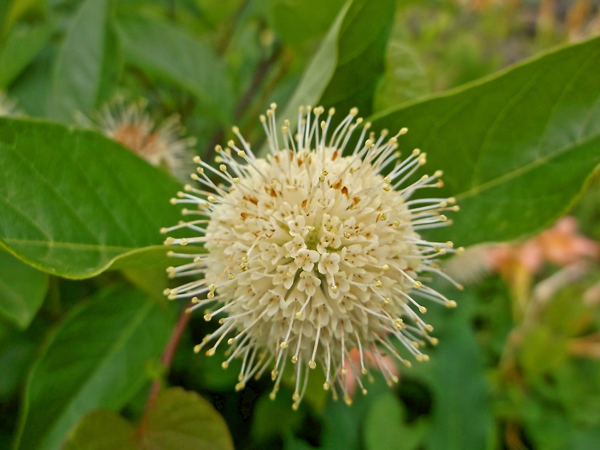
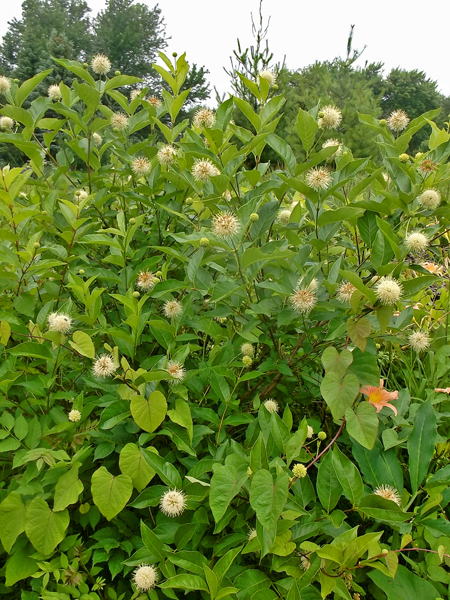
Buttonbush growing with the vining Wild Yam (Ipomoea pandurata) - soon to have three white morning glory like blooms.
 The Illinois Rose (Rosa setigera) is a rambler and needs a trellis to grow on if planted in a small garden. It can be cut back to the ground in spring, as the one below is, to keep it managable. It's quite nice when in bloom, has nice red/orange/yellow fall color, and its fruit (hips) are a valuable food source for over wintering birds.
The Illinois Rose (Rosa setigera) is a rambler and needs a trellis to grow on if planted in a small garden. It can be cut back to the ground in spring, as the one below is, to keep it managable. It's quite nice when in bloom, has nice red/orange/yellow fall color, and its fruit (hips) are a valuable food source for over wintering birds.
 New Jersey Tea (Ceanonthus americanus), is a low shrub, growing to a maximum height of about three feet high and wide. In July it is covered in fuzzy, two inch long blooms. Hummingbirds come by to pick off the pollinated insects, rather than for its nectar. New Jersey Tea does not have great fall color, so its snow white blooms in July are what give this plant its ornamental interest. This woody plant can also be cut back to the ground during its winter dormancy to keep its growth more compact, as the plant shown is, every March.
New Jersey Tea (Ceanonthus americanus), is a low shrub, growing to a maximum height of about three feet high and wide. In July it is covered in fuzzy, two inch long blooms. Hummingbirds come by to pick off the pollinated insects, rather than for its nectar. New Jersey Tea does not have great fall color, so its snow white blooms in July are what give this plant its ornamental interest. This woody plant can also be cut back to the ground during its winter dormancy to keep its growth more compact, as the plant shown is, every March.
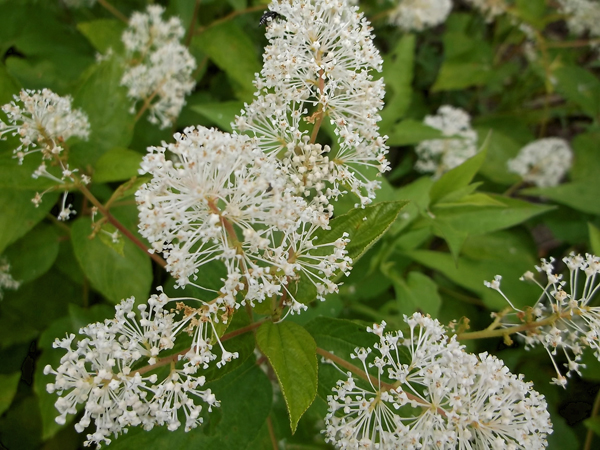 On the other hand, Smooth Sumac (Rhus glabra) has great fall color - mostly bright red, and its pinnately divided leaves inspired many a Frank Lloyd Wright window panel. Sprouts coming up from the roots will need to be kept cut back in June, but it is otherwise carefree, attaining heights of eight to twelve feet tall and equally wide.
On the other hand, Smooth Sumac (Rhus glabra) has great fall color - mostly bright red, and its pinnately divided leaves inspired many a Frank Lloyd Wright window panel. Sprouts coming up from the roots will need to be kept cut back in June, but it is otherwise carefree, attaining heights of eight to twelve feet tall and equally wide.

Smooth Sumac growing with Beebalm (Monarda fistulosa), another great butterfly plant, in the foreground.
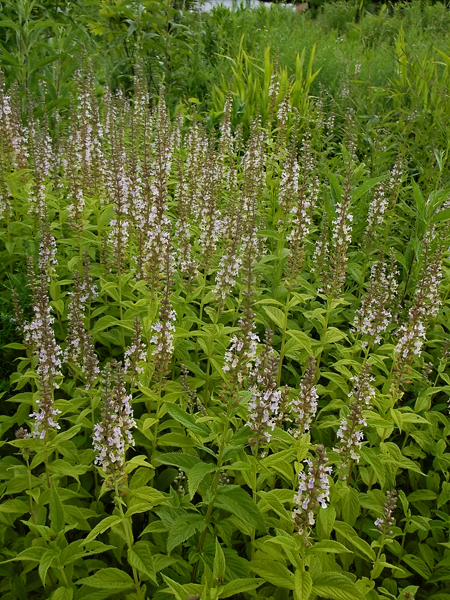
Wood Sage, or Germander, is commonly found in moist/wet meadows, but can be grown in average garden soil.
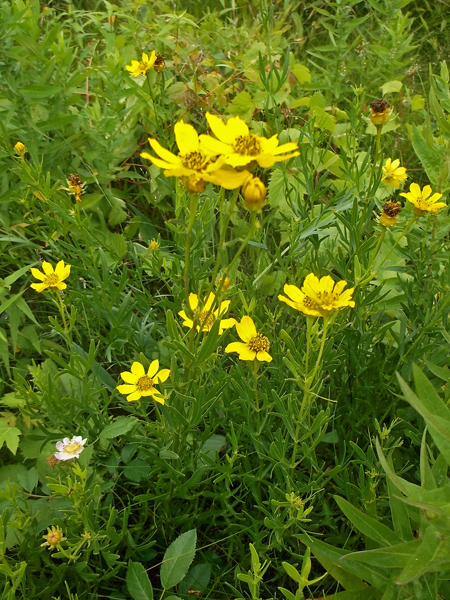 Finally, Purple Prairie Clover (Dalea purpurea, Petalostemum purpureum)) is a real show stopper. The bright purple/pink blooms flower in rings, starting at the base of the flower structure, opposite that of liatris, which blooms from the top down. Forming nice bushy eighteen inch to two foot tall plants, Purple Prairie Clover is a great addition to any garden.
Finally, Purple Prairie Clover (Dalea purpurea, Petalostemum purpureum)) is a real show stopper. The bright purple/pink blooms flower in rings, starting at the base of the flower structure, opposite that of liatris, which blooms from the top down. Forming nice bushy eighteen inch to two foot tall plants, Purple Prairie Clover is a great addition to any garden.
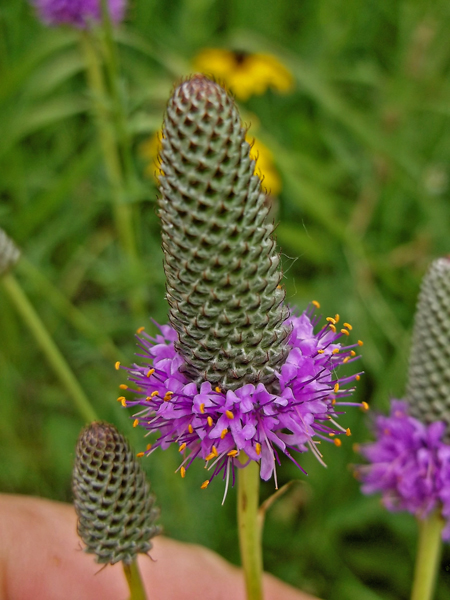 hhh
hhh
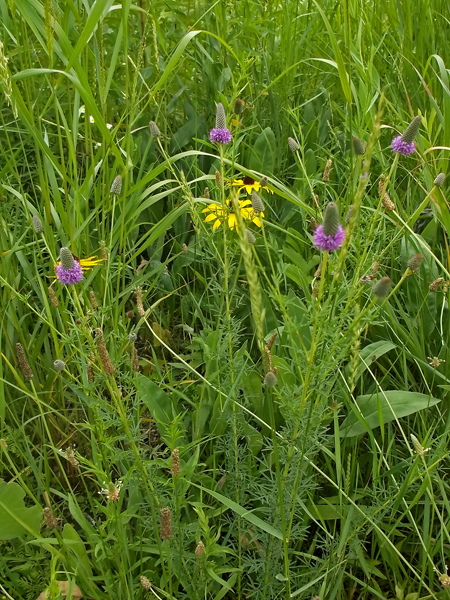
While this photo of Purple Prairie Clover was taken in a backyard meadow setting, it looks great in a more formal planting as well.
